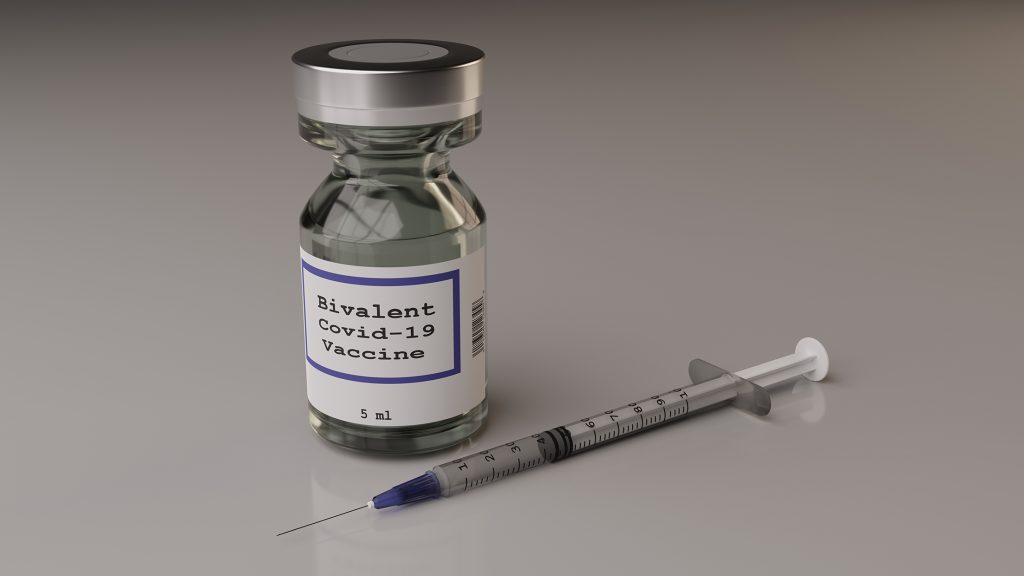The role of bivalent booster COVID-19 vaccinations in the fight against SARS-CoV-2 Omicron infection

The currently circulating SARS-CoV-2 Omicron BA.1 subvariant consists of more than 30 mutations in the spike protein, of which at least 15 mutations have been identified in the receptor-binding domain, which is the primary target of neutralizing antibodies (NAs).1 Recent findings suggest that the sera of individuals who were vaccinated against or previously infected with SARS-CoV-2 exhibited lower NAs against Omicron BA.1 subvariant versus its predecessor and other circulating Omicron strains.1 The emergence of BA.1 has therefore threatened the effectiveness of available COVID-19 vaccines, underscoring the need for modified strategies for prevention.
The recently introduced bivalent COVID-19 vaccine, composed of components from the SARS-Cov-2 ancestral and Omicron BA.4/BA.5 strains, may provide broader and sustained protection against hospitalizations caused by SARS-CoV-2 Omicron BA.1.2 The Human Medicines Committee of the European Medicines Agency recently stated that individuals aged 12 years and above are eligible for bivalent vaccine three months after their last monovalent vaccination or infection.3 Huiberts and colleagues,4 in their recent study (conducted between 26 September and 19 December 2022 in the Netherlands), estimated the relative effectiveness (RE) of bivalent mRNA vaccines in terms of targeting the predominant SARS-CoV-2 Omicron BA.1 subvariant among community-dwelling adults who were previously vaccinated with a primary series, followed by one or two monovalent boosters. The study participants belonged to one of two different cohorts of an ongoing prospective study (VASCO) – (1) 18–59-year-olds (n=12,988) who had previously received a primary vaccination series + one monovalent booster vaccination; and (2) 60–85-year-olds who were vaccinated with a primary series + one (n=8,963) or two (n=10,591) monovalent booster(s).4 Among the cohorts, 42.4% (n=5,504) and 60.9% (n=11,900) of the participants aged 18–59 years and 60–85 years, respectively, received a bivalent booster, a week before the study commenced. Overall, recipients of the bivalent boosters were older in age (median age: 51 vs 48 years in 18–59-year-olds) and more often had a medical condition (26.5% vs 18.0% in 18–59-year-olds; 41.9% vs 38.2% in 60–85-year-olds) when compared with those who did not receive bivalent boosters.4
The study’s key findings include4:
- During the study, 3,005 participants were reported to have contracted COVID-19 infection, confirmed by a positive SARS-CoV-2 polymerase-chain reaction test or self-administered antigen test.
- The incidence of SARS-CoV-2 infection was generally lower among participants who received a BA.1-targeted bivalent booster compared with those who did not receive the bivalent booster.
- The incidence of SARS-CoV-2 infection was highest among participants without any prior infection, was lower among those with a prior pre-Omicron infection, and was lowest among participants with a prior Omicron infection.
- Analysis using Cox proportional hazard models (adjusted for age, gender, education and presence of a medical risk condition; overall estimates were stratified by infection history) showed that Omicron BA.1-targeted bivalent vaccination accounted for an overall RE against SARS-CoV-2 Omicron infection of 31% among 18–59-year-olds (95% confidence interval [CI], 18–42) and 14% among 60–85-year-olds (95% CI, 3–24).
- Among 18–59-year-olds, the overall RE of a bivalent booster was found to be lower (20%; 95% CI, −7–40) among participants with prior Omicron infection versus those with no prior infection (32%; 95% CI, 14–47) or those with prior pre-Omicron infection (44%; 95% CI, 13–64).
- In accordance with the literature, a previous Omicron infection conferred better protection than bivalent vaccination, despite the time period since bivalent vaccination (among those without prior infection) being relatively shorter than the time that had spanned since other participants experienced prior Omicron infection.
- Among participants aged 18–59 years, the relative protection conferred by prior Omicron infection, with or without bivalent vaccination, was substantially higher (80–83%) than that received from bivalent vaccination (without prior infection; 37%) or from prior pre-Omicron infection (34%).
- Similarly, participants aged 60–85 years demonstrated greater relative protection from a prior Omicron infection, with or without bivalent vaccination (82%), than from bivalent vaccination alone (14%) or prior pre-Omicron infection (43%).
In conclusion, the study highlighted that ‘hybrid immunity’ obtained from a combination of vaccination and Omicron infection may provide better protection against SARS-CoV-2 Omicron BA.1 than vaccination alone.4 BA.1-targeted bivalent vaccination was found to confer limited added protection against SARS-CoV-2 Omicron infection among individuals who had received a primary vaccination series followed by one or two monovalent boosters, in addition to contracting Omicron infection.4
References
- Offit PA. N Engl J Med 2023;388(6):481-483.
- Link-Gelles, R, et al. MMWR 2022;71(48): 1526–1530.
- European Medicines Agency: First adapted COVID-19 booster vaccines recommended for approval in the EU. Available at https://www.ema.europa.eu/en/news/first-adapted-covid-19-booster-vaccines-recommended-approval-eu. Accessed 8 March 2023.
- Huiberts AJ, et al. Euro Surveill 2023;28(7):2300087.










